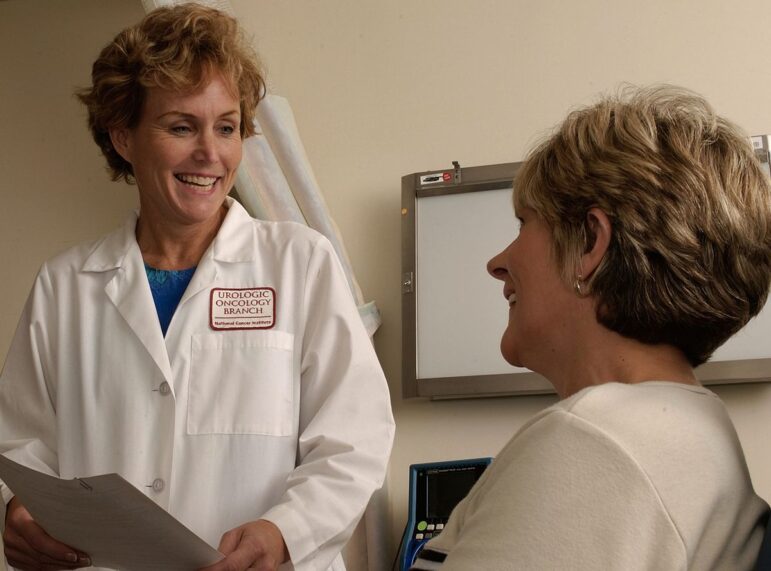
TWH – Throughout history and across various cultures, healers have included both men and women. In many societies, women have played significant roles as healers, often acting as midwives, herbalists, and caretakers within their communities. In many cultures, healing practices were predominantly carried out by women, with healing techniques passed down matrilineally. Many were also accused of Witchcraft and women were historically erased from the role of physician.
With the rise of a powerful patriarchy practically the world over, gender roles emerged dictating that men were the primary providers and decision-makers, while women were expected to take on caregiving roles within the household. This societal expectation limited women’s access to education and professional opportunities, including in the field of medicine.

A drop of medicine being poured into a spoon against a black background [Pixabay]
Legal and religious oppression of women facilitated the prevention of women from entering medicine. During the 14th century, for example, medical education in the West was under the control of the Church, which exclusively endorsed male physicians while disregarding female healers. By the late 1500s, women who practiced healing faced accusations of witchcraft because they diverged from the regulations set by the clergy. The Church likely perceived female healers as a challenge to its dominance over parishioners.
While men have thus dominated the medical profession since the medieval period in the West, significant progress has been made in recent decades to address gender disparities and promote gender equality in medicine. Today, women make up a growing proportion of medical school graduates and practicing physicians, although challenges such as gender bias and work-life balance continue to affect the experiences of women in medicine. As of 2022, the latest available data, women comprised 37% of physicians practicing in the United States. Female physicians were particularly represented in the specialty areas of pediatrics and hospice/palliative care.
A new study published yesterday in the journal Annals of Internal Medicine suggests that patients under the care of female physicians exhibit reduced mortality and readmission rates compared to those treated by male physicians.

Health Professional and Patient -National Cancer Institute (NCI) [public domain]
“What our findings indicate is that female and male physicians practice medicine differently, and these differences have a meaningful impact on patient health outcomes,” Dr. Yusuke Tsugawa, the senior author of the study and an associate professor-in-residence of medicine in the division of General Internal Medicine and Health Services Research at the David Geffen School of Medicine at the University of California Los Angeles, said in a press statement.
In their research, Tsugawa and colleagues analyzed Medicare claims data spanning from 2016 to 2019, comprising over 458,100 female patients and over 318,800 male patients. Approximately 31% of both the male cohort and female patient cohort received care from a female physician.
The researchers found that the mortality rate for female patients under the care of a female physician was 8.15%, in contrast to 8.38% when treated by a male physician. This variance is slight but deemed clinically significant by the researchers. For male patients, the mortality rate was 10.15% when treated by female physicians, compared to 10.23% for those treated by male physicians.
Medicare is a federal health insurance program in the United States primarily for people who are 65 years of age or older. Though there are some Medicare programs covering younger individuals, the sample limits whether the findings are applicable to younger populations.
As to why the data suggest this difference in mortality rates, much more research is needed. The researchers hypothesized that multiple factors could contribute to these findings. They theorize that male physicians might underestimate the severity of illness in their female patients. Previous studies have observed that male doctors tend to underestimate pain levels, gastrointestinal and cardiovascular symptoms, and stroke risk in female patients, potentially resulting in delayed or incomplete treatment. Additionally, female physicians may establish better communication with their female patients, increasing the likelihood of these patients providing crucial information leading to more accurate diagnoses and treatment. Finally, female patients may feel more at ease undergoing sensitive examinations and engaging in detailed conversations with female physicians.
Tsugawa emphasized the necessity for further research into the differences in medical practice between male and female physicians, as well as their implications for patient care. “Enhanced comprehension of this subject could pave the way for interventions that genuinely enhance patient care,” he remarked.
Furthermore, Tsugawa advocated for the eradication of gender disparities in physician compensation. “It’s crucial to acknowledge that female physicians deliver exceptional care, thus increasing the number of female physicians is beneficial for patients on a societal scale,” he added.
The Wild Hunt is not responsible for links to external content.
To join a conversation on this post:
Visit our The Wild Hunt subreddit! Point your favorite browser to https://www.reddit.com/r/The_Wild_Hunt_News/, then click “JOIN”. Make sure to click the bell, too, to be notified of new articles posted to our subreddit.
